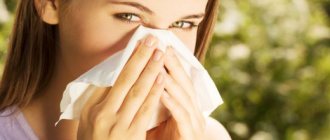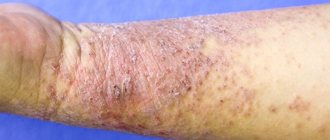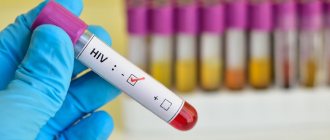Today in pharmacies you can find many solutions for rinsing the nasal cavity. These remedies help cope with a runny nose and make the patient feel better by reducing the amount of discharge. Also, preparations for rinsing the nose fight swelling and provide the mucous membrane with intense hydration.
Today in pharmacies you can find many solutions for rinsing the nasal cavity. These remedies help cope with a runny nose and make the patient feel better by reducing the amount of discharge. Also, preparations for rinsing the nose fight swelling and provide the mucous membrane with intense hydration.
What are these funds?
The basis of the vast majority of nasal rinsing solutions is sea water. This component is able to effectively remove mucus from the nose along with the viruses and bacteria found in it, and also cope with swelling due to the salt content in the composition.
Sea salt naturally fights inflammation, soothes irritated mucous membranes, and helps eliminate wounds and microcracks that appear due to frequent nose blowing. In addition, sea water contains useful microelements, such as iodine, which has a bactericidal effect.
Often, rinsing solutions are physiological, that is, the salt concentration in them is 0.9%, which corresponds to the internal environment of the body. Therefore, preparations based on saline solution are absolutely safe and approved for use even for newborns.
Nasal rinsing in children
It is unlikely that children under three years old will be able to explain the technique of the procedure. To clean your baby's nose, you need to place his head on your lap with his nose facing up. Using a pipette, take a few drops of the solution and inject it into each nostril in turn. After 20 - 30 seconds, use a special aspirator to remove the mucus with the remaining washing liquid. The baby should not be left alone during the procedure - you need to make sure that the baby does not choke.
For older children, the procedure can be performed in a sitting, lying or standing position, focusing on the child’s wishes. If during the procedure, the baby complains of tingling in the nose, then the salt concentration is slightly higher than optimal (the mucous membranes of children are more sensitive and receptive). In this case, you need to dilute a new solution with less salt or dilute the existing one with water.
"Dolphin"
This remedy for the common cold includes portioned powders for preparing a solution and a special container for rinsing the nasal cavity.
The composition of the classic “Dolphin” includes a mineral complex and plant components: licorice and rose hip extracts. When the powder is diluted with water, the patient receives an isotonic solution, which, due to additional components, has anti-inflammatory, antiseptic and immunomodulatory effects.
For people prone to allergic reactions, a special “Dolphin for allergies” was created, which contains only a complex of minerals, without the addition of herbal ingredients.
results
As is known, the positive effect of irrigation procedures is associated with the possibility of atraumatic removal from the nasal cavity of excess viscous mucus and/or dense inflammatory products, pollutants, and restoration of the activity of the physiological systems of the nasal mucosa [8–13]. Taking these circumstances into account, one of the common indications for systematic rinsing of the nasal cavity is allergic rhinitis (AR). Many clinicians note that this procedure is well tolerated, which is considered as an additional treatment for AR, allowing the use of lower doses of intranasal corticosteroids, reducing the incidence of side effects and economic costs [14, 15]. However, a meta-analysis of clinical studies presented in international citation databases indicates that the results of the published studies are of low or very low quality of evidence, the studies themselves are usually small, and the tests used to assess the severity of the disease are not sufficiently validated [16–18]. In this regard, the need for better and more adequate research in this area is emphasized.
One of the important factors that causes a certain inconsistency in assessing the effectiveness of irrigation procedures for AR and potentially influencing the results of their use is not only the characteristics (concentration, temperature, volume), frequency of use of the saline solutions used, but also the properties of inhaled allergens, in particular pollen plants. It is well known that both pollen grains and their soluble and insoluble protein granules can cause allergic reactions. The allergenic proteins contained in the pollen grain are highly soluble in water and in a humid environment quickly turn into a hydrated state, diffusing through the shell of the pollen grain to the outside [19]. Having a high potential for allergenic effects, such proteins easily penetrate the nasal mucosa, initiating the development of a humoral and cellular immune response, the occurrence of which has certain cause-and-effect relationships. In particular, experimental studies have shown that animals sensitized to insoluble pollen proteins demonstrated a predominant humoral response with a high content of IgE in the blood serum, and when sensitized to water-soluble proteins, the cellular response was higher, accompanied by a significant increase in eosinophils and lymphocytes in the bronchoalveolar fluid , Th2 cytokines [20]. According to the authors, water-insoluble allergens play a role in the formation of a centrally mediated inflammatory response, and water-soluble allergens may participate in the peripheral humoral response.
Taking these circumstances into account, it can be assumed that excessive irrigation of the nasal cavity is accompanied not only, and perhaps not so much, by the removal of pollen entering the nasal cavity with inspiratory air currents, but promotes the hydration of pollen grains, facilitating the release and resorption of allergenic proteins, thus maintaining inflammatory changes in the mucous membrane of the nasal cavity. Clinically, this may be one of the reasons for the insufficiently high effectiveness of nasal lavages and certain discrepancies in assessing the effect of saline solutions on mucus clearance, the frequency of beating of ciliated epithelium cilia, and the content of pro-inflammatory mediators in nasal secretions in AR [21].
Another common reason for prescribing irrigation procedures is inflammatory diseases of the initial parts of the respiratory tract - acute respiratory infections (ARI), acute and chronic rhinosinusitis. In everyday practice, irrigation of the nasal cavity with saline solution is used as an adjuvant to cleanse the mucous membrane, remove from its surface biologically active substances (inflammatory mediators) involved in the inflammatory reaction, and increase the resistance of the initial parts of the respiratory tract to infection. The positive results of this procedure have been demonstrated in a number of publications. Thus, in a prospective, randomized, blind, placebo-controlled study (62 patients), it was shown that the use of an antibiotic (amoxicillin 100 mg/kg/day) in combination with irrigation procedures with 0.9% sodium chloride solution for uncomplicated acute sinusitis in children ( 31 people) and saline nasal rinse with placebo (31 people) were not associated with any differences in the incidence of nasal and general symptoms on days 7 and 14 of observation, but a lower incidence was observed in the control group (nasal rinse + placebo) side effects than in patients using amoxicillin and nasal saline irrigation [22].
Along with this, there is limited effectiveness of nasal lavage with saline solution for acute rhinosinusitis in adults, which is confirmed by the results of a meta-analysis of randomized controlled trials (level of evidence Ia), emphasizing the importance of this procedure in children with acute rhinosinusitis as an addition to standard medications (level of evidence Ib - confirmed by at least one randomized clinical trial), and the prevention of recurrent nasal and sinus infections has been demonstrated in small randomized clinical trials in which statistical data are based on a small number of patients (evidence level IIb) [23].
An independent evaluation of 3 randomized controlled trials (618 participants) comparing saline nasal lavage with other treatments for ARI found limited evidence of effectiveness in adults, but in most cases there was no difference between nasal lavage and control, and 40% of children did not tolerate nasal saline solutions [24].
In another series of 5 randomized clinical trials, including 544 children (3 studies) and 205 adults (2 studies), in most cases there was no difference between the effectiveness of saline nasal irrigation and a control group that used usual care measures, other aerosols for the nose, but not a placebo. Only 1 large study reported a significant reduction in nasal secretion and nasal obstruction scores and a reduction in the need for decongestants with saline rinsing [7]. The authors do not exclude that irrigation of the nasal cavity with saline solution may have some significance in terms of alleviating the symptoms of ARI, but the results of the studies do not allow us to draw a conclusion about the reliability of the evidence obtained.
Thus, it is obvious that there is a certain ambiguity in assessing the degree of influence of irrigation procedures on the dynamics of the inflammatory process, a somewhat simplified approach in determining the feasibility and duration of nasal lavage in acute respiratory infections, acute and chronic rhinosinusitis. Undoubtedly, the results of the above and many other clinical studies have to a certain extent contributed to the understanding of in what cases and how useful systematic rinsing is for pathologies of the nose and paranasal sinuses. At the same time, knowledge of the factors that influence the effectiveness of irrigation procedures is of particular importance for the clinician.
In this regard, data on the effect of nasal rinsing with saline solutions on the antimicrobial activity of nasal secretions from patients with chronic rhinosinusitis and the content of lysozyme and lactoferrin deserve attention. In a study by C. Woods et al. [25] showed that irrigation of the nasal cavity with an isotonic solution reduced the antimicrobial activity of nasal secretions, which was restored after 24 hours, and local levels of lysozyme and lactoferrin, which returned to initial values after 6 hours.
After washing with a hypotonic solution, the secretion of lysozyme and lactoferrin was restored by approximately 40% after 6 hours and 24 hours, respectively, and the antimicrobial activity of nasal secretions was restored after 6 hours; after rinsing the nasal cavity with a hypertonic solution, the antimicrobial activity of nasal secretions remained at the base level, and the content of lysozyme and lactoferrin in nasal secretions decreased and increased by 30% after 24 hours.
Of significant interest are the results of another study concerning the study of the fungicidal activity of lysozyme of nasal secretions against the background of the use of saline solutions for rinsing the nose [26]. According to the data obtained, the activity of lysozyme against A. fumigatus
in a solution the ionic strength of 21 mM was 95%.
However, with increasing ionic strength, the fungicidal activity decreased and was absent in a solution with an ionic strength of 46 mM. Commercial saline solutions for nasal lavage, according to the authors, inhibit the in vitro
fungicidal activity of nasal secretion lysozyme against
A. fumigatus
, which may be due to the negative effect of ionic solutions, in particular commercial solutions for rinsing the nasal cavity, on the mechanisms of ionic interaction of lysozyme with microbial cell wall.
Given these circumstances, one should also be aware of the potential risks associated with microbial contamination of irrigation bottles used by patients. In general, bacterial growth is detected in the examination of 97% of cylinders (bottles) for nasal lavage, and the coincidence of sinonasal and “bottle” microflora is recorded in more than ½ (51%) of the examined patients with resistant chronic rhinosinusitis [27, 28]. However, bacterial biofilms were detected on the inner surface of most irrigation bottles examined using scanning electron microscopy. Microbial contamination is not eliminated when using alternative irrigation systems that include a one-way valve to reduce backflow [29].
An effective method for sterilizing irrigation bottles is their treatment with 1% sodium hypochlorite solution (Milton's liquid) and/or microwaves [27]. It is emphasized that the use of regular disinfection of irrigation bottles can minimize the potential risk of reinfection of the nasal cavity and paranasal sinuses [30].
No less important from a therapeutic point of view is the question of how well the liquid can reach the paranasal sinuses during irrigation procedures. In this regard, a study by K. Snidvongs et al. is of particular interest, in which the volume and distribution of iodinated contrast solution in the paranasal sinuses was assessed using computed tomography after rinsing the nose with a syringe for irrigation and spray [31]. It was shown that only in 3 maxillary sinuses (in 2 of 14 examined patients) a small amount of contrast solution was determined (0.10, 0.04 and 0.13 ml). Moreover, regardless of the type of procedure used (rinsing or spray), almost identical volumes of solution (0.0093 and 0.01 ml, respectively) entered the sinuses. The authors note that nasal douche and spray are not effective in delivering irrigant solution to the paranasal sinuses in chronic rhinosinusitis.
These results seem understandable if they are compared with the data obtained by A. Grobler et al., who observed the penetration of an irrigation solution containing dye into sinuses with a minimum anastomosis diameter of 7.31 mm and the absence of a marker in the sinuses, the anastomosis diameter of which did not exceed 1.26 mm. It has been shown that guaranteed (95% probability) penetration of the solution into the sinuses when rinsing the nose is possible with a minimum diameter of the anastomosis of 3.95 mm [32].
"Aquamaris"
This line of nasal rinsing products is represented by several drugs, each of which has specific indications for use:
- “Aquamaris Strong” is produced on the basis of purified sea water and helps fight a severe runny nose, including in the presence of inflammatory processes in the sinuses: sinusitis, rhinosinusitis.
- "Aquamaris Sense". A drug whose active ingredients are sea water and ectoine, which protects the cell wall from damage. The product is intended for the treatment of allergic rhinitis.
- “Aquamaris Plus” - in addition to sea water, contains a healing component - dexpanthenol, which helps irritated mucous membranes recover in a short time.
Aquamaris drugs are relatively inexpensive, which is why they are popular among patients.
"Aqualor"
The Aqualor solution is available in the form of a spray with a continuous spray system, which helps to quickly and effectively rinse the nasal cavity. The drug is based on sea water. The range of products includes:
- “Aqualor Soft”, which gently cleanses and moisturizes the mucous membrane of a runny nose.
- "Aqualor Norm", which is intended for deep cleansing of the nasal cavity during rhinitis.
- “Aqualor Forte” and “Extra Forte” - ease breathing during congestion without developing addiction.
- "Aqualor Active Soft", created specifically for the treatment of prolonged runny nose.
- "Aqualor Active Forte", capable of coping with a severe runny nose.
For children, which can be used to rinse the nose of infants.
Preparation of saline solution
The recipe for making saline solution is very simple. Add 1 teaspoon of sea or table salt to a glass of boiled water and mix thoroughly. Treatment of a child with congestion should be more gentle: the dosage of salt should be reduced to ½ teaspoon. In addition to salt, you can add a teaspoon of soda or a drop of iodine to the solution. If you use sea salt, make sure that all the crystals dissolve, otherwise they will injure the nasal mucosa during the rinsing process. The main condition in preparing the solution is that the liquid should not be hot: for rinsing, you need to use a solution at room temperature. It must be remembered that consistency in treatment is necessary to achieve the desired effect. For prevention, you need to rinse your nasal passages 1-2 times a day for two weeks. This duration is not enough to combat a runny nose. The number of washes should be increased to 3-4 times a day.
"Marimer"
The drug is an isotonic solution prepared from purified sea water. "Marimer" contains microelements that have a beneficial effect on the functioning of the ciliated epithelium of the nasal cavity. As a result, the resistance of the mucous membrane to infectious agents – viruses and bacteria – increases.
The drug is approved for use by pregnant women and children over 1 year of age. Can be used to relieve allergic rhinitis.
How to properly rinse your nose?
Rinsing the nasal cavity is a simple procedure, but to perform it you need to know a few rules. First, one nostril is irrigated with the required amount of solution. The head must be tilted in the same direction. After the product helps make the mucus more liquid, you should blow your nose without making too much effort. Then do the same manipulations on the other side.
If the procedure is performed on an infant, the first nostril to be irrigated is the one from below in a position on its side.
To rinse the nose with a stream, for example, using a device from Dolphin, a person is required to have a certain skill, which, however, is quickly acquired through practice. Holding one nostril closed, lean over the sink and pour the solution into the other nostril, squeezing the bottle. Then wait until the liquid comes out of the second nostril. Repeat this sequence of actions on the opposite side.
So, at least one of the preparations for rinsing the nasal cavity should be kept in your home medicine cabinet. These drugs work effectively both for the prevention of acute respiratory viral infections and colds, and as a component of the treatment of these diseases. A seawater-based spray will help you survive seasonal allergies. Finally, the solutions are sterile and safe and can be used for daily hygiene.
How to rinse a child's nose?
Otolaryngologists are unanimous in the effectiveness of irrigation procedures for young children. Aspirations can be performed on children from birth. The nasal canals in children are narrow and short, which explains their obstruction during colds and allergies. As a result of nasal congestion, infants have difficulty sleeping and eating, and their weight decreases. To rinse the nose of young children, it is better to use professional products and aspirators instead of pears.
Nasal shower and irrigation can be used from 4 years of age. When choosing pharmaceutical rinsing products, you should be guided by the age restrictions specified by the manufacturer.







